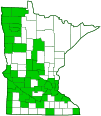western rock jasmine
(Androsace occidentalis)
Conservation • Wetland • Description • Habitat • Ecology • Use • Distribution • Taxonomy
Description |
||
Western rock jasmine is a small annual forb that appears as a basal rosette of leaves and several flowering stalks rising from a slender taproot. It occurs throughout western and central North America. It is most common between the Rocky Mountains and the Mississippi River. In Minnesota it is occasional in the western, southern, and central regions, absent from the northeast. It is short-lived, flowering from April to May and dying back by mid-summer. It is easily overlooked due to its diminutive size. For these reasons it may be more common than reported. Western rock jasmine does not form mats. Numerous leaves form a single inconspicuous, radiating cluster (rosette) on or close to the ground. The leaves are lance-shaped to egg-shaped, 3 ⁄16″ to ¾″ (5 to 20 mm) long, and ⅛″ to ⅜″ (4 to 9 mm) wide. They are on minute leaf stalks. The leaf blades are green, sometimes reddish-green toward the tip, rarely entirely red. They are tapered to the base and taper to a narrowly rounded tip. The upper surface is covered with short, fine, soft, unbranched, grayish-white hairs. The lower surface is hairless. The margins are hairy and may be untoothed or have shallow, blunt teeth toward the tip. There is no true stem. Rising from the center of the basal rosette are usually 3 to 15, sometimes just 1 or 2, long flower stalks (scapes). The inner scapes are more or less erect, the outer are curved upward from the base (ascending). The scapes can be 1 3 ⁄16″to 4″ (3 to 10 cm) long, but are is usually no more than 3″ (7 cm) in length. They are unbranched, leafless, and covered with minute, fine, soft, branched hairs. They may be green, greenish-red, or entirely red. At the end of each scape there is sometimes a single flower but usually an umbrella-shaped cluster (umbel) of 2 to 10 or more flowers. Each umbel is subtended by a whorl (involucre) of up to 10 modified leaves (bracts). The bracts are relatively broad, lance-shaped to elliptic or egg-shaped, ⅛″ (3 to 4 mm) long, and 1 ⁄16″ (1.5 to 2.0 mm) wide. The rays of the umbel (pedicels) are slender, finely hairy, and ⅜″ to 1 3 ⁄16″ (10 to 30 mm) long. The pedicels are unequal in length. The inner ones are more or less straight, the outer ones are ascending. The flowers are about 1 ⁄16″ (2 mm) wide and 1 ⁄16″ to ⅛″ (2 to 4 mm) long. There are 5 sepals, 5 petals, 5 stamens, and 1 style. The sepals (calyx) are green, minutely hairy, and ⅛″ to ¼″ (3 to 6 mm) long. They are fused at the base for less than half their length into a ridged, broadly bell-shaped cup, then separated into five erect, broadly lance-shaped lobes. The petals (corolla) are white and 1 ⁄16″ to ⅛″ (2 to 4 mm) long. They are fused at the base into a floral tube that is shorter than or equal to the calyx, then separated into 5 ascending to spreading lobes. The lobes are shorter than the floral tube. The stamens have very short stalks (filaments) and do not protrude from the corolla. The fruit is an oval, ⅛″ to 3 ⁄16″ long capsule containing 20 to 50 dark brown seeds. The petals are persistent in fruit, the tips remaining white, even after the capsule has been shed. |
||
Height |
||
1 3 ⁄16″to 4″ (3 to 10 cm) |
||
Flower Color |
||
White |
||
Similar Species |
||
Habitat |
||
Moderately moist to dry. Upland prairies with sand, gravel, or rocky debris; hillsides; ravines; cliffs; old fields; railroads; roadsides; and disturbed areas. Full sun. |
||
Ecology |
||
Flowering |
||
April to May |
||
Pests and Diseases |
||
|
||
Use |
||
|
||
Distribution |
||||
|
Sources |
|||
| 7/28/2023 | ||||
Nativity |
||||
Native |
||||
Occurrence |
||||
In Minnesota, absent in northeast, occasional elsewhere. |
||||
Taxonomy |
|||
| Kingdom | Plantae (Plants) | ||
| Subkingdom | Pteridobiotina | ||
| Phylum | Tracheophyta (Vascular Plants) | ||
| Class | Magnoliopsida (Dicots) | ||
Order |
Ericales (heathers, balsams, primroses, and allies) | ||
Family |
Primulaceae (primroses) | ||
| Subfamily | Primuloideae | ||
| Tribe | Androsaceeae (rock-jasmine) | ||
Genus |
Androsace (rock-jasmines) | ||
Subordinate Taxa |
|||
Synonyms |
|||
Androsace arizonica Androsace occidentalis var. arizonica Androsace occidentalis var. simplex |
|||
Common Names |
|||
western rock jasmine western rock-jasmine western rockjasmine |
|||
Glossary
Ascending
Growing upward at an angle or curving upward from the base.
Bract
Modified leaf at the base of a flower stalk, flower cluster, or inflorescence.
Calyx
The group of outer floral leaves (sepals) below the petals, occasionally forming a tube.
Corolla
A collective name for all of the petals of a flower.
Filament
On plants: The thread-like stalk of a stamen which supports the anther. On Lepidoptera: One of a pair of long, thin, fleshy extensions extending from the thorax, and sometimes also from the abdomen, of a caterpillar.
Involucre
A whorl of bracts beneath or surrounding a flower, flower head, or flower cluster.
Pedicel
On plants: the stalk of a single flower in a cluster of flowers. On insects: the second segment of the antennae. On Hymenoptera and Araneae: the narrow stalk connecting the thorax to the abdomen: the preferred term is petiole.
Rosette
A radiating group or cluster of leaves usually on or close to the ground.
Scape
In plants: An erect, leafless stalk growing from the rootstock and supporting a flower or a flower cluster. In insects: The basal segment of the antenna.
Umbel
A flat-topped or convex, umbrella-shaped cluster of flowers or buds arising from more or less a single point.
Visitor Photos |
|||||
Share your photo of this plant. |
|||||
| This button not working for you? Simply email us at info@MinnesotaSeasons.com. Attach one or more photos and, if you like, a caption. |
|||||
|
|||||
MinnesotaSeasons.com Photos |
|||||
Plants |
|||||
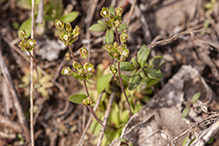 |
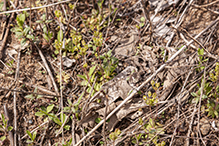 |
||||
Inflorescence |
|||||
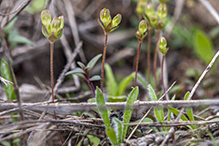 |
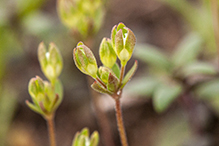 |
||||
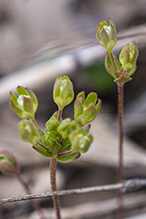 |
|||||
Flowers |
|||||
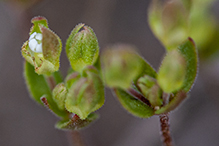 |
|||||
Rosette of Basal Leaves |
|||||
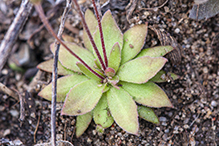 |
|||||
Infructescence |
|||||
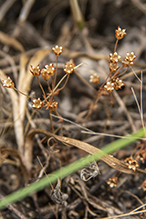 |
|||||

Slideshows |
||

Visitor Videos |
|||
Share your video of this plant. |
|||
| This button not working for you? Simply email us at info@MinnesotaSeasons.com. Attach a video, a YouTube link, or a cloud storage link. |
|||
Other Videos |
|||

Visitor Sightings |
|||||
Report a sighting of this plant. |
|||||
| This button not working for you? Simply email us at info@MinnesotaSeasons.com. Be sure to include a location. |
|||||
|
|||||
MinnesotaSeasons.com Sightings |
|||||

Created: 11/4/2019
Last Updated:
